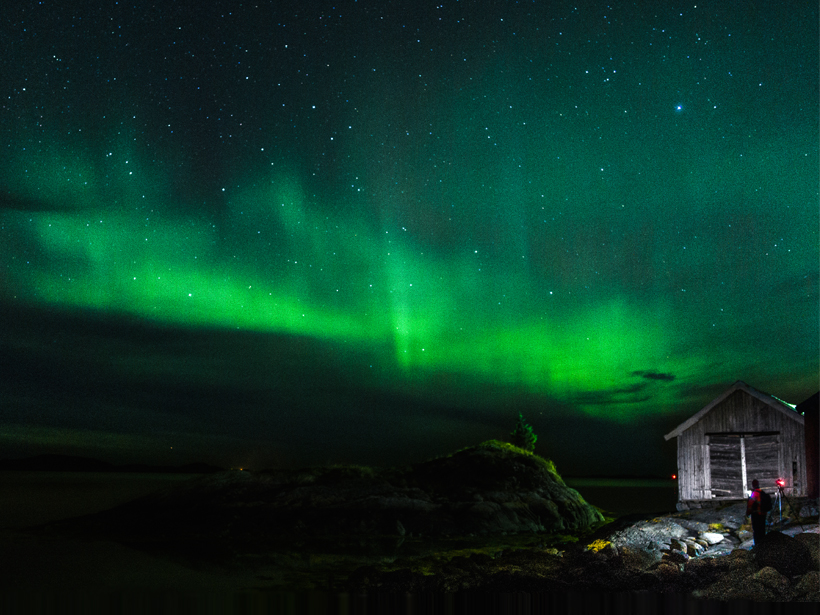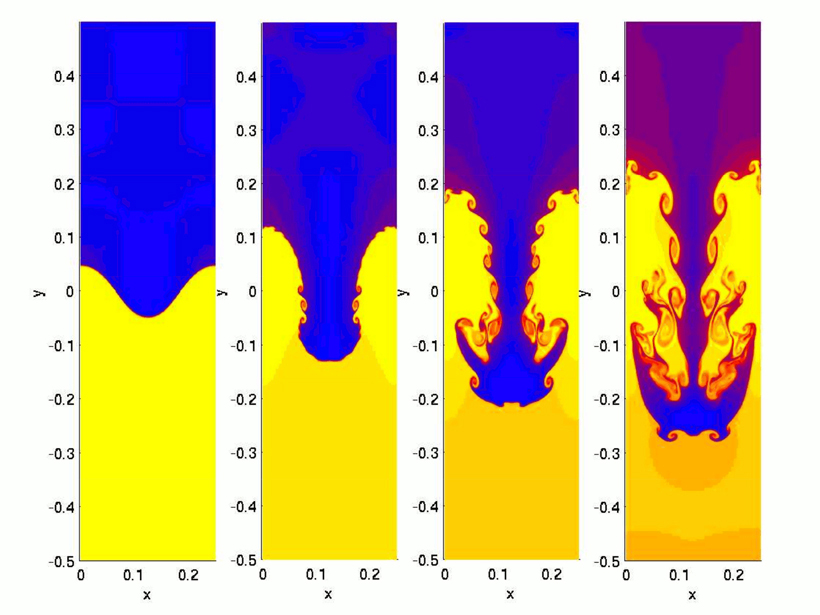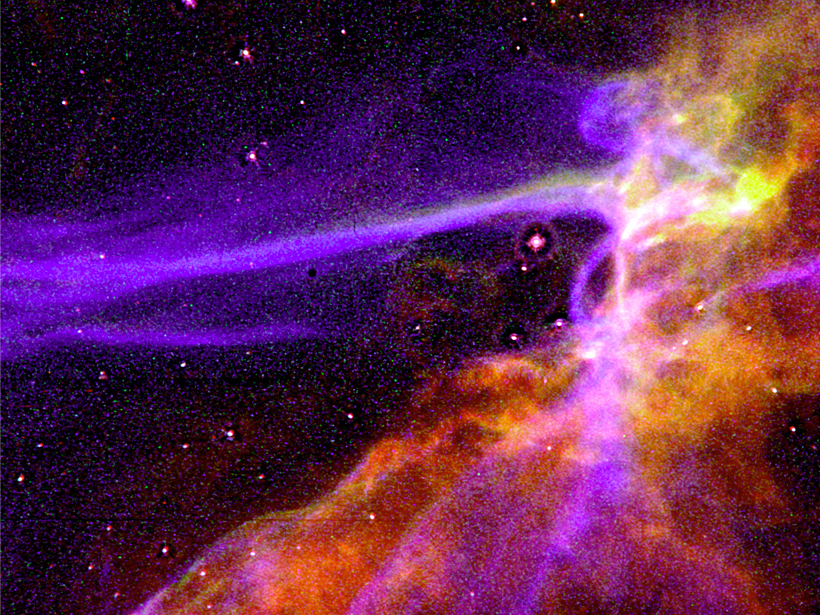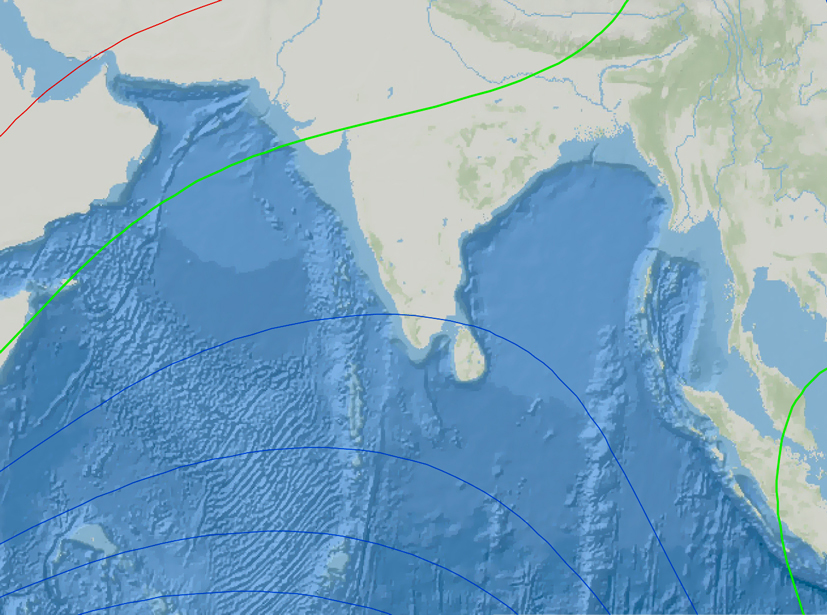The aurora crowning Jupiter's poles—the most powerful in the solar system—flares up when plasma is injected into its magnetic field.
magnetic fields & magnetism
The Curious Case of the Halloween Ghost Electrons
When solar storms pounded Earth during Halloween in 2003, scientists were eager to measure their effects. But new research shows one satellite was seeing "ghost" particles that probably weren't real.
New Clues to Mysterious Hiss in Earth's Plasmasphere
An analysis of the electromagnetic "hiss" that surrounds Earth reveals it's not just static; there's a signal hidden within, which may help scientists uncover its source.
"Fingers" of Plasma Invade Saturn's Magnetic Field
NASA's Cassini probe observed vast amounts of plasma on the fringes of Saturn's magnetic field being mysteriously injected hundreds of thousands of kilometers inward.
Magnetized Collisionless Shock Waves Measured in the Lab
Scientists create collisionless shock waves to better understand the phenomenon in nature.
Aurora Painting Pays Tribute to Civil War's End
Frederic Edwin Church's 1865 arctic landscape, Aurora Borealis, is a beautiful depiction of nature. It might also be a memorial reflection on the end of the war.
Jackson Receives 2015 William Gilbert Award
Michael Jackson will receive the 2015 William Gilbert Award at the 2015 American Geophysical Union Fall Meeting, to be held 14–18 December in San Francisco, Calif. The award recognizes outstanding and unselfish work in magnetism of Earth materials and of the Earth and planets.
Spacecraft Records Rising-Tone Magnetosonic Waves
A rising tone in wave frequencies suggests a complicated, nonlinear series of interactions between electromagnetic sound waves and protons near the magnetic equator.
Making the Northern Indian Ocean a Hub of Geomagnetic Data
A new initiative seeks to unite and network the magnetic research community in the northern Indian Ocean region.
X Marks the Spot of Magnetic Islands in Space
At the edge of Earth's magnetic field, satellites have found X-shaped fields and fast-moving "islands" of magnetism that could shed light on the physics of solar storms.









